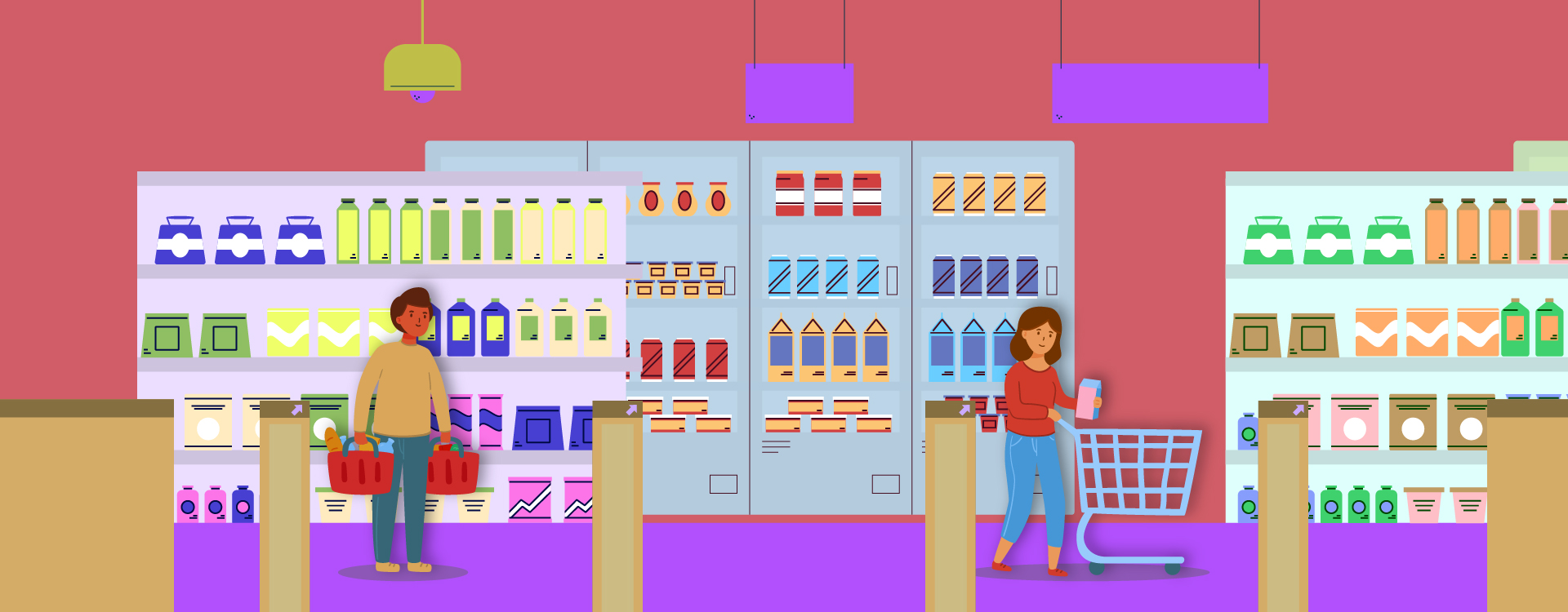Businesses and start-ups around the world are opening retail stores that don’t require a human presence. Yes, you read that right. Many retail sector players are heavily investing resources in this hybrid model, from start-ups in China and India to the American retail giant Amazon.
In 2018, Chinese start-up BingoBox opened a cashierless supermarket store and now has more than 300 stores in 30 cities across China. In 2019, HyperCity opened two cashierless stores on the Infosys Hyderabad campus with the support of a Bangalore-based start-up.
So far, Amazon Go has been the only major player in the retail industry’s cashierless supermarket segment. Amazon Go is functional in the United States and the United Kingdom as a cashierless retail chain operated by Amazon. The Amazon Go cashierless supermarkets are partially automated, and customers buy cashless products using self-automated checkout terminals. These stores use advanced technology to collect important information, such as the customer’s height, weight, and purchase data.
‘‘
The concept of cashierless supermarkets is seen as a revolutionary model that leverages smartphone and geolocation technology's popularity to simplify the customer experience, supply chain management, and inventory.
Who are Amazon Go’s competitors?
Amazon isn’t alone in changing the cashierless supermarkets and retail game. The competition for the leaderboard in this futuristic retail segment is fierce, especially for new players to speed up the game. Chinese conglomerate Alibaba designed its unique business model, and cashierless supermarkets experience through its Hema grocery store brand. Launched in 2015, Hema uses a new retail business model that integrates both online and offline products and services.
In India, Watasale is a new age cashierless supermarket based in Kochi. It has a fully automated cashless store inspired by Amazon Go. Customers can select and place items in the store, and the costs are automatically deducted from their e-wallet. Users need to download the Watasale app on their phone and then log in with their email address and phone number. The application provides a QR code as an identifier and a “ticket” for the company. The user needs to scan the password and log in to the store.
Other cashierless supermarkets and retailers include San Francisco-based Standard Cognition, Trigo Vision of Israel, Netherlands-based Albert Heijn.
Cashierless Supermarkets: Technology and Implementation
Cashierless supermarkets use various technologies, including computer vision, intensive learning algorithms, built-in sensors for hardware purchases, and digital payments and transactions. The concept of cashierless supermarkets is seen as a revolutionary model that leverages smartphone and geolocation technology’s popularity to simplify the customer experience, supply chain management, and inventory.
Businesses use iOS and Android apps linked to customer accounts for commodities sales, transactions and payments. The app is needed to enter the store with turnstiles that scan a QR code produced on the app.
In hardware technology, these stores use dozens of cameras on the roofs and weight sensors on store shelves to detect users’ products. When a customer takes something off the shelf, it is added to the user’s virtual shopping cart. When the user puts it back on the shelf, it is also removed from the user’s virtual shopping cart.
The most successful player yet, Amazon Go, added an intelligent shopping cart called the Dash Cart to their new store in Los Angeles. The basket automatically identifies the items placed and calculates the total costs using the camera, scale, weight sensor and image processing tools.
Cons of Cashierless Supermarkets
With turnstiles in cashierless supermarkets, the automatic door that only allows one person to pass at a check-in location, companies hope to eliminate the point of contact between the consumer and the store employees. Once the person behind the counter is replaced by this tech, businesses’ economic savings will increase dramatically, and unemployment will grow with it significantly.
Amazon Go’s project carried out in Seattle showed the extent to which technology can be a threat to some professions. It must be said that, for everything else, there are still physical employees, such as storeroom workers and stock clerks, which robots may not have difficulty replacing sooner or later, perhaps even mingling with humans.
On the technological front, one of the critical cons that have reportedly hindered launches of cashierless supermarkets is issues with the sensors’ ability to track aggregated users within the store, such as when children move items to other counters or when more than one consumer has similar body habitués.




